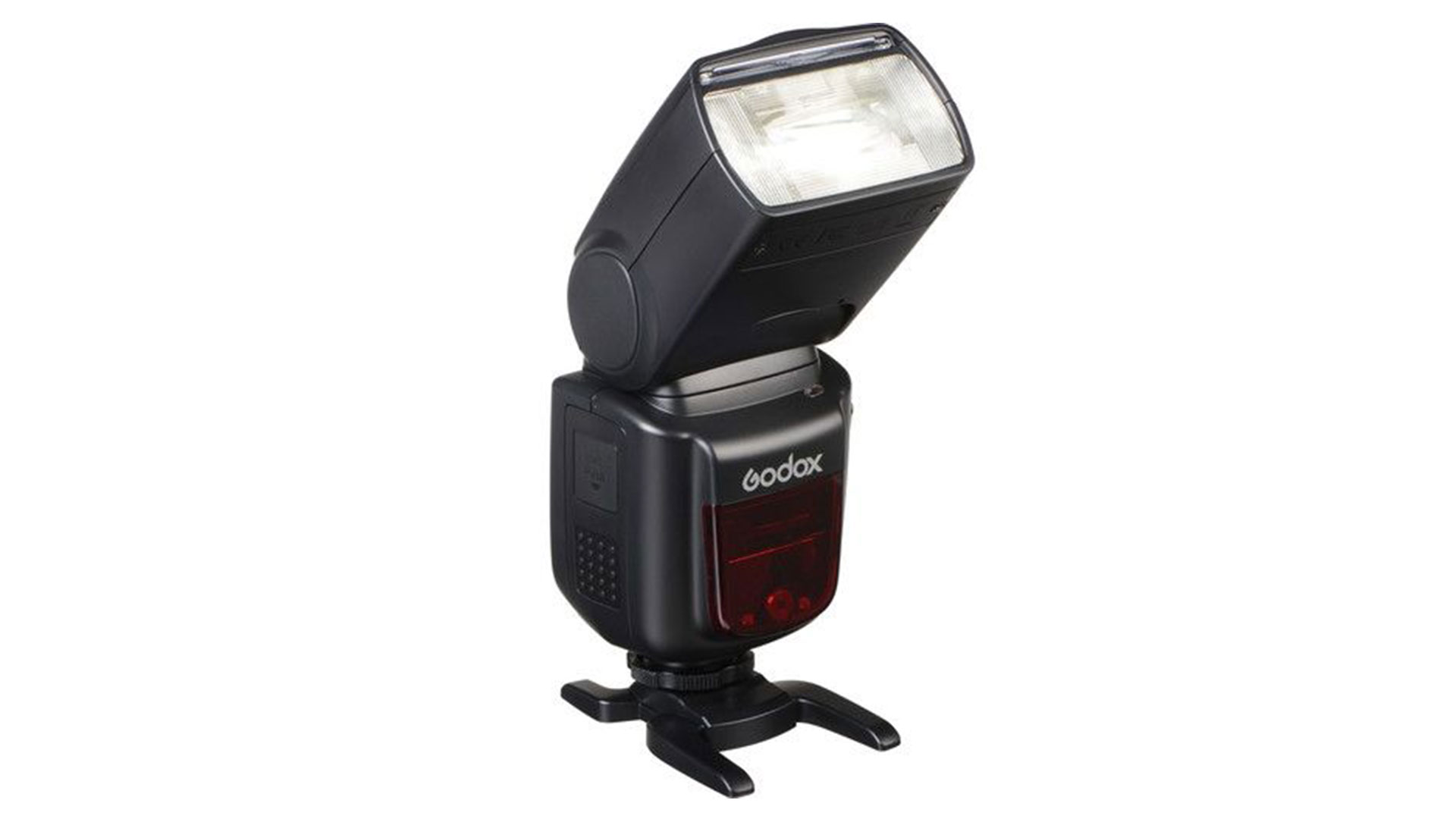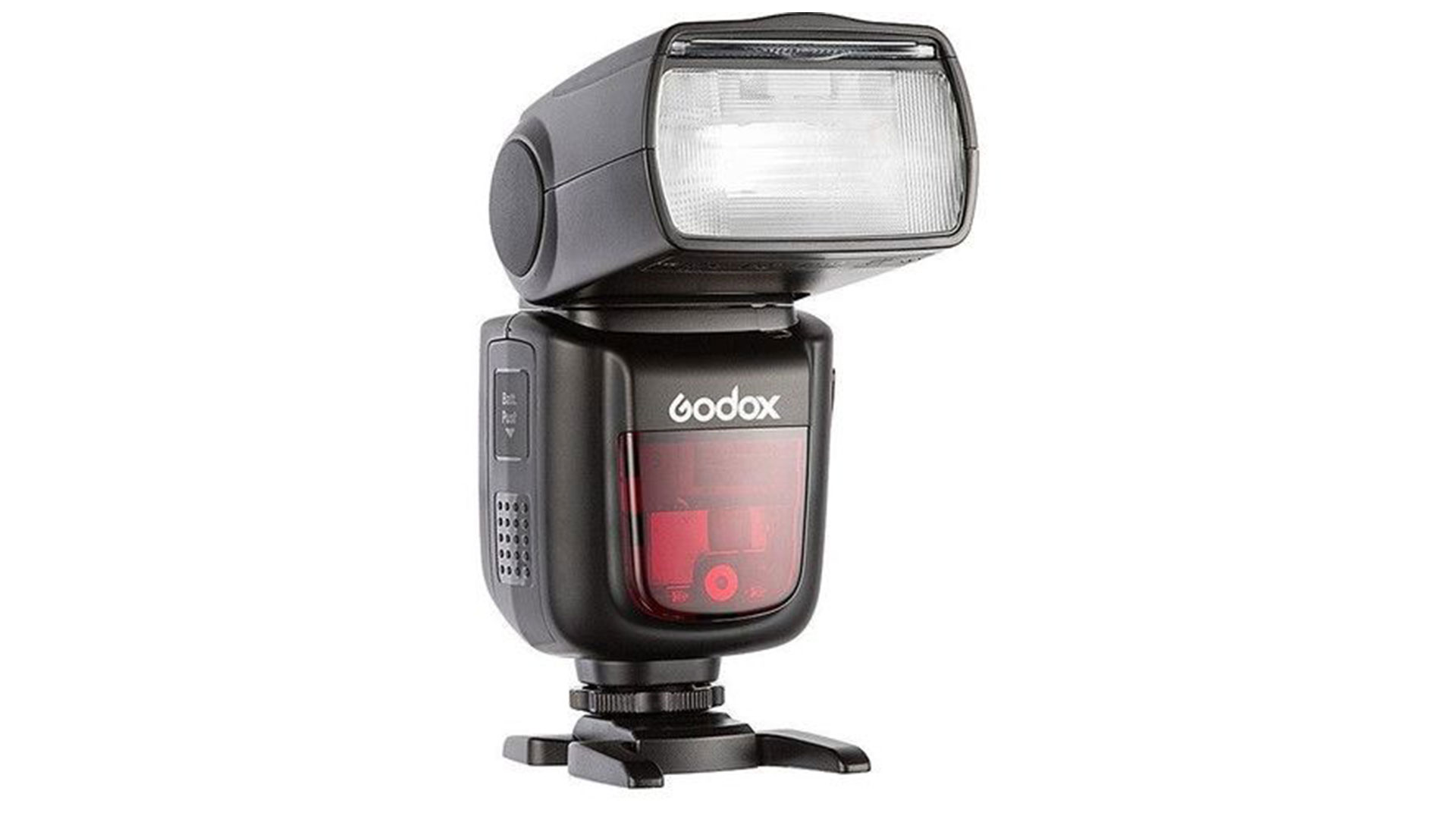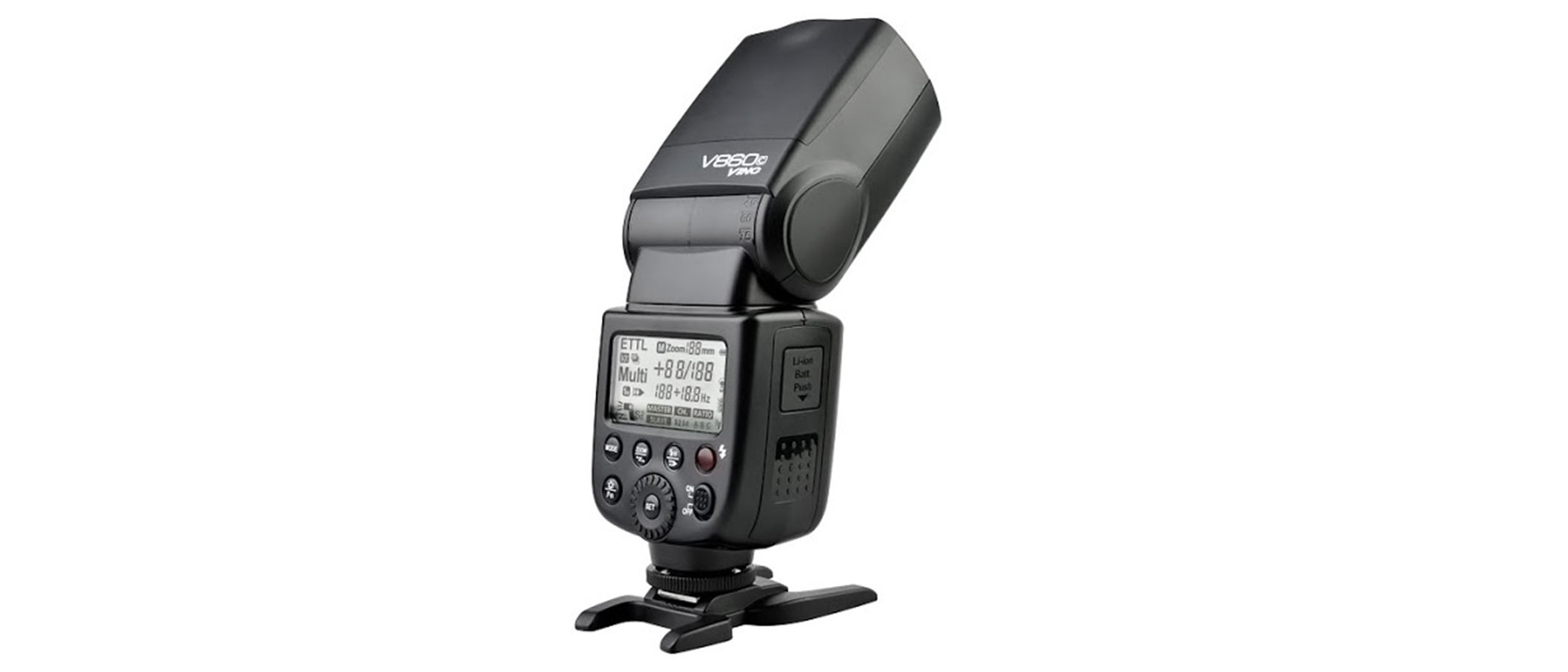Digital Camera World Verdict
It’s essentially a Chinese Profoto A1 – which has annoyed the Swedes no end – with affordability being the biggest selling point. However, Profoto still has the edge in build quality and overall functionality.
Pros
- +
Rechargeable lithium-ion battery pack ends the tyranny of AA cells
- +
Powerful metric guide number of 58 (at ISO 100)
- +
Flash head incorporates a wide-angle diffuser and catchlight panel
Cons
- -
Lacks a few frills for advanced lighting techniques
- -
Lighting ratios with multiple units need manual setup
Why you can trust Digital Camera World
The owners of electric cars talk of ‘range anxiety’, the stress associated with possibly running out of power before reaching your destination. There’s a similar stress associated with using on-camera flash units – despite whatever the specs might claim, you never quite know when a set of double-As is going to call it a day. Not with the Godox V860 though. It doesn’t use conventional batteries, but instead is powered by a substantial lithium-ion power pack with 2000mAh on tap – roughly equivalent to a dozen AA cells – to give around 650 full-power flashes. Welcome to the 21st century.
The V860 is Godox’s second generation lithium-ion powered on-camera flash, and the Chinese company had to deal with a few teething problems early on, but now with all the bugs sorted there’s no question this is the way to travel. Given that you’re unlikely to be always flashing at full power, the ‘real world’ range is likely to be much more than 650 pops… certainly enough to cover the typical wedding, for example. The V860 packs a handy punch in terms of flash power too, with a metric guide number of 58 at ISO 100, which equates to a working aperture of around f32 at one metre. And, inevitably, it’s significantly cheaper than the comparable camera-branded speedlights – even when you add in an RF wireless transmitter/receiver kit – yet the feature set is pretty competitive.
There are two versions, for compatibility with either Canon’s E-TTL II system (V860C) or Nikon’s i-TTL (V860N), and the Godox flash can operate either as the sender unit or a receiver unit in a wireless TTL set-up with branded flashes. To be honest, the V860 feels just as well-built as either a Canon Speedlite or Nikon Speedlight – the GRP casing is solid and the hotshoe foot has a metal mounting plate. With the battery aboard it weighs just under 600 grams so it can hardly be considered flimsy. The tilt/swing flash head has very meaty actions… in fact, the swivel is perhaps just a bit too stiff, but at least it’s going to stay exactly where it’s set without the need for a lock. The zooming reflector gives a coverage range equivalent to 24mm to 105mm (35mm format) with the option of either auto or manual adjustment. There’s a built-in, pull-down wide-angle diffuser which increases the light spread to the equivalent of a 14mm’s angle-of-view. There’s also a built-in catchlight panel, should you have use for such a thing.

Key specs
Guide number: 58 (ISO 100/metres).
Flash coverage: Equivalent to 24mm to 105mm (35mm format). 14mm with built-in diffuser panel. Auto/manual zooming.
Head settings: Swivel = 0 to 360 degrees. Tilt = -7 to 90 degrees.
Sync modes: First/second curtain, high speed up to 1/8000 second.
Exposure control: TTL automatic, manual (down to 1/128), exposure compensation up to +/-3.0 EV, auto exposure bracketing (up to +/-3.0 EV), exposure lock.
Flash duration (t=0.5): 1/300 – 1/20,000 second.
Recycling time: 1.5 seconds at full power.
Triggering: Hotshoe, 2.5 mm cable connector, IR photocell, RF receiver.
Main features: Wireless TTL control (sender/receiver) for either Canon E-TTL II (V860C) or Nikon i-TTL (V860N), 650 full-power flashes from a battery charge, AF focus assist illuminator, LCD digital display panel, USB port for firmware upgrades, wireless control port (for FTR-16s non-TTL RF receiver), modelling flash function, strobo mode, built-in wide-angle panel, built-in catchlight panel, thermal protection circuit (after 30 consecutive full-power flashes), auto power-off.
Power: Rechargeable 11.1 volts, 2000mAh lithium-ion battery pack.
Size (WxHxD): 76x190x64 mm.
Weight: 540 grams (including battery pack).
Up to speed
Another benefit of using a lithium-ion battery pack is faster recycling times, and Godox quotes just 1.5 seconds to recycle after a full power flash which is very rapid indeed. Of course, it’s even faster with lower power flashes.
While the emphasis with V860 is on its compatibility with the Canon or Nikon optical-based wireless TTL flash systems, it can be operated fully manually with an adjustment range down to 1/128 of full. Additionally, there are exposure compensation and auto bracketing functions – both over a range of +/-3.0 EV – to supplement normal TTL operations.
Driving the V860 is very straight-forward via its large LCD info panel and various function buttons (although the latter aren’t back-illuminated) with a centralised control wheel for navigation. Godox pretty much sticks to the basics here, but there are the options of first/second curtain sync, HSS sync (up to 1/8000 second), a strobo mode and a modelling flash function. No frills then, but everything you’re likely to really need. One curious omission, though, is the absence of a flash distance scale from the info panel.
We tested the V860C variant with both a Canon EOS 6D and an 80D plus a Canon Speedlite 580EX II (as it happens, its direct Canon rival) and found it integrates without any issues as either the sender or the receiver unit. The TTL auto exposure control was reliably accurate with both direct and bounce flash, and the Godox flash is fully controllable via the D-SLR’s Flash Control menu. The only negative is that lighting ratios have to be set up manually, unit by unit, using the exposure compensation control.
It’s important to note that a new version of the V860 models – announced just as this report was being written – includes a built-in radio receiver for wireless TTL control.

Verdict
It’s tempting to say that affordability is the Godox V860’s main appeal, and this is certainly true if you’re buying multiple units, but it can hold its own in terms of capabilities and performance. At the top of the list is the high-capacity lithium-ion battery pack, but this is a well-built unit with a competent list of features and no issues as far as TTL system integration is concerned. It lacks some frills, so it’s more workhorse than show pony, but most importantly, it gets the job done.
Read more:
The best flash diffusers, softboxes and modifiers for your speedlight
Tips to achieve natural lighting with a flashgun
The best flash triggers: wireless control for off-camera flash

